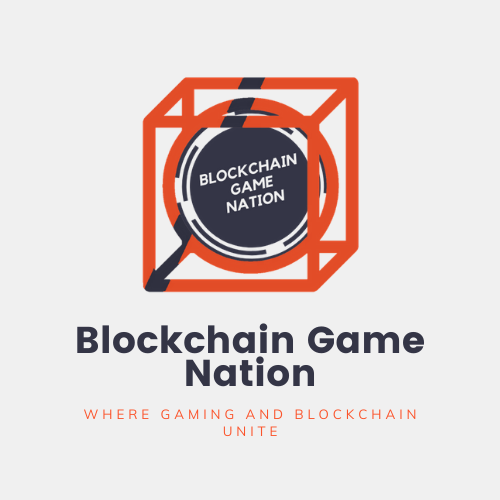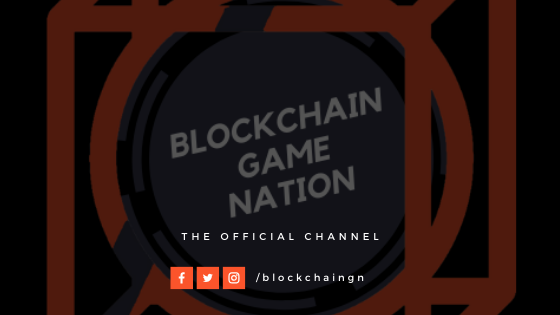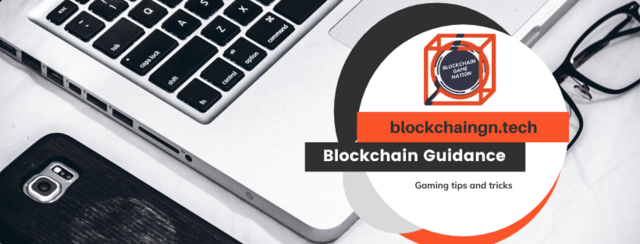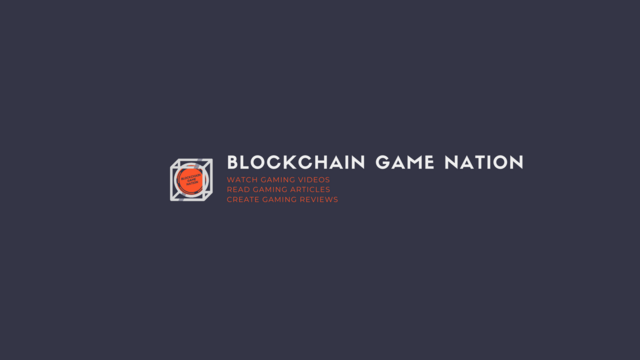The Best Blockchain Gaming Information You Will Find
What Value Can Blockchain Bring to Games?
Ownership and Liquidity of Game Assets
On the blockchain, players retain ownership of their in-game assets, and these assets have more extensive liquidity. The "karma", items, weapons, and characters in traditional video games are all owned by the game developers (i.e. the companies), and these centralized authorities have the power to make drastic changes to the assets or even get rid of them entirely.
Traditional in-game assets are limited to the built-in economies of a single game. It seems that they have no value outside of the game. It is also difficult to create use cases for them on a technical level.
In blockchain logic, once in-game assets are put on the blockchain, they can all be attributed to the player's blockchain address; that player has ownership of the address, hence ownership of the assets.
Let's imagine the following use cases:
1. Assets Can Be Traded, Anywhere, Anytime
A large number of games don't have item trading features. Oftentimes, the reasons behind this are to avoid chaos in the in-game economic mechanism, extend users' gameplay time, and increase income for the developer (i.e. the company).
Assuming the above problems are not of the developer's concern, then "on-chain items plus a mobile wallet" can be implemented in on-chain and off-chain transactions between two users, anywhere, and at any time.
Say you are chatting with your friend about a recent PC game over dinner. Both of you open your mobile wallets, check out each other's weapons and armor, and you decide to buy his weapons. The transaction is as simple as using Apple Pay. And at the end of the night, when you go home and log in to your game, you will find your newly purchased weapons sitting in your item list. Item trading is not necessarily confined to a single game. I can use my Thor's Hammer from Game A to trade your Harry Potter's Wand from Game B, as long as we have consensus on the value of the items. However, this may breach T&S in conventional games with digital assets in order to keep the revenue coming to them instead of within the gaming ecosystem.
In addition, trading is not necessarily limited to one single item, either. In the future, we may be able to package all of the assets from one game into a single token and sell the whole thing to another player. The buyer can then unpack the token to see and use the game assets.
2. Reuse of Game Assets
Since on-chain assets are saved under each player's address, it is easy for developers to reuse the game assets from other games in their own game, or to modify them.
CryptoCuddles is a cat battle game that's based on CryptoKitties. After a player logs in with their Ethereum addresses, the game will automatically import all of the CryptoKitties characters from those addresses. Only the battle logic is created by CryptoCuddles' developers.
The reuse of assets is easiest for games using the same ecosystem or IP. For example, if you have several characters from Pokémon, it's natural for developers to allow you to import all of your character assets into a new game that uses the same IP.
In the case of inter-game and inter-IP operability, the reuse of assets requires complex design and collaboration among developers. For example, can you have your city from Minecraft in a game that's similar to World of Warcraft? Can you import it from an open-world or an open-planet game?
3. A New Way to Get New Users
In the traditional video game world, new games often need to reacquire users or use old games to divert traffic. The blockchain can make this user reacquisition cheaper and easier — like how CryptoKitties users are all potential CryptoCuddles game players.
If direct reuse of assets involves IP issues, then developers can also reward users who own kitties on CryptoKitties with in-game characters, treasure boxes, items, etc. They just need to use a player's login address to verify the on-chain data.
In this way, any game can take full advantage of popular games to divert traffic. Coin forking and airdrops use the same strategy — airdropping tokens 1:1 to all ETH or EOS holders, thereby, it can help gain users at a very low cost.
Blockchain games accumulate more than 100,000 users' information from all different genres. If a new game needs to do a promotion, then the most efficient way would be to seek out a gaming publication that is geared towards non-blockchain users. This would help with mass adoption while acquiring the much-needed increase in the number of experienced players in the Blockchain Gaming space.

Get 2000 FUN tokens just for sign up --> http://bit.ly/2000FUN4FREE
The Relationship Between Game Developers and Players
Most of the time, game players and developers often stand on opposite sides. One party wants to take advantage of the in-game dynamics to earn a reputation and get more enjoyment out of it. The other party modifies the mechanism and parameters again and again to exploit players.
However, the blockchain breaks this tension by changing the relationship between developers and players. Traditional video games run on centralized servers, where developers set the rules and players try to break them. So, what happens if the game is running on multiple nodes and some are run by players who will also receive incentives?
It is possible for developers and players to form a community as well as a consensus. When some of the nodes are hosted by key opinion leaders of the game, part of a developer's interest will be highly consistent with that of the game community. Loyal players will spontaneously maintain the balance of the game, help developers attract new users, extend the life cycle of the game, and build up the community together.
Have you ever experienced the heartbreak of a game shutting down? I believe a lot of you may have. For me, my heart was shattered when the Worms Online game stopped operating. Many factors are attributed to the death of the game, including a problem with the game itself and the failure of their agency's operations strategy. I won't go into details here.
This game used to have numerous loyal fans who formed their own teams and forums, and key opinion leaders who would make videos and organize offline tournaments. Even today, in a few online forums, people are still holding grudges about its discontinued operation, which happened more than a decade ago.
If Worms Online was placed on the blockchain today, the results might be different. On one hand, a node operator who represented the players would have a say in the gameplay mechanism and operations strategy. And they could offer suggestions to the developers, which would have never been heard in the past.
On the other hand, even if one day, the developer pushes an update that doesn't impress the community, the community members can still vote with their feet, fork from the original game, and take it in a new direction according to the will of the community.
It's like a private server run by the community nodes. To a certain extent, the blockchain may bring unprecedented freedom and democracy to games.

Game Mechanics with More Transparency
When the core ecosystem of the game is put on-chain, players can view the rules (which were once locked in a safe at some company). This builds a stronger bond between developers and the players.
Note: Smart contracts are not "immutable" on the technical perspective, and some of the game rules can be parameterized to provide users with a way to view the parameters. Through multiple contract interactions, the main contract stores data and invokes sub-contracts, and multiple sub-contracts write the game's core rules mechanism. If the mechanism needs to be updated, the core data in the main contract does not need to be migrated. Only the sub-contract address needs to be changed, so the migration cost is lower.
With the transparent logic of the game mechanism, the player can know certain things, such as the rate of getting rewards from a treasure box, the rareness of a weapon, and whether the developers are operating as promised.
Since traditional video games hide their source code, they can arbitrarily modify them without the players' consent. "The one and only Santa Claus" may all of a sudden become everyone's grandpa without anyone knowing what happened. This is really common in traditional video games, but in the world of blockchain games, it will no longer be the case.
A fair and just mechanism — plus the game updates that have been agreed upon by the community — give players a purer experience.
The Key
Longevity. When you take a look at the life cycle of different genres of games they tend to differ based on many different factors that come into play. To find out the key aspects that ensure a game's life cycle is set up for longevity lets use League of Legends for example. This game after 15 years still has more daily users around the world than any other game, this is mainly due to the collaboration between Riot Games and the PC Bangs (PC Bars In Asian Countries) that essentially allowed League of legends to be installed on every PC with all characters unlocked! This means they ensured their game had universal access while opening new servers across the world to ensure mass adoption. More people watched the league of legends championship this year than the previous 7 years. This means that having a competitive esport within your games ecosystem is also the key to longevity. Since players of all types will eventually connect with a brand, team or player within that esport they will become dedicated to. You can see examples of this when a team rebrands and players stick to rooting for that organization because it retains the same professional gamers they love to watch play.

What Challenges are Posed to Game Developers?
How Do You Monetize?
This is an inevitable question. Game developers need to make a living and they need to increase the company's commercial value. Perhaps after reading the above four aspects, most people in the game industry will be like, "Whaaaaat?! How am I supposed to make a profit then?"
Due to the increased liquidity of in-game items, they might only be able to make x amount of money, instead of 100x, like before. The traditional locked-safe strategy allures players to continue spending money and testing their luck. Now that all of this will be open to the public, who's gonna be stupid enough to pay for that?
Indeed, from the standpoint of developers, these questions are very substantial. But the problem is, we are still applying such traditional logic to a new concept. We need to think out of the box and break some assumptions. Past experience will be a good reference, but it won't provide practical solutions.
With the Internet, we went from free access to premium services, and then to traffic monetization. We've all been there to witness the transition from buyout to a regular subscription.
Each iteration of new technology will more or less have an impact on the monetization of the existing system. Similarly, the blockchain is no exception.
In addition to the income from opening loot crates and assets in pre-sale, taking a certain percentage of every transaction is way more suitable for people to monetize on the blockchain. While offering different tiers of premium membership to the game is also proven to be optimal for blockchain games. The blockchain itself allows game assets to be extremely liquid — remember how I mentioned they could be traded anywhere, and at any time. If a game provides players with tremendous room for creation, then there will be a large amount of user-generated content, and the value of this content will be agreed upon by the players.
In this framework, developers provide the underlying logic for content generation, and users provide valuable content. Then content can be traded between players, and the developers can take a portion of each transaction.
For instance, countless players have transformed into architects and built, one after another, majestic miracles in Minecraft. With infinite possibilities, some built railways, some made a calculator with logic circuits, and some even implemented Minesweeper.
A team of "National Architects" actually replicated The Forbidden City. A lot of people wish they could have The Forbidden City mod, or even modify it. But Minecraft doesn't have a mod trading feature, so we can only admire other people's creations by watching videos. What a pity!
If content is only generated by the developers, it can't go far in the blockchain world. In this highly-liquid, player–community world, I think we need to give more freedom to players and communities, so they can achieve greater commercial value.
Can a Hearthstone-type game allow node runners to issue cards that can be voted on by the community and other nodes? Can a pet-keeping game allow users to design a pet's costume and share it with other players?
Whether or not there are other ways of monetization, it is a question that developers need to spend more time on. No matter what, the main goal is to create more means of value.

The Real Challenges
Numerical Game Design vs. Tokenomics
Numerical game design is a way to adjust parameters and algorithms, in order to ensure balance and extend game time in traditional games. The complexity increases exponentially when applied on the blockchain. Because the economic system is no longer a closed-loop, it is necessary to consider the interactions with the entire blockchain ecosystem.
Once game assets are put on-chain, we will need a token economy. That means the gold coin system in the game will be indirectly linked to real-world currency. If the asset tokens can be increased indefinitely, then the corresponding game assets may depreciate indefinitely.
The token economy requires careful design. This design must focus on the macro and micro perspectives and must be combined with the gameplay mechanism. It should answer questions like:
How are the tokens generated? How are they distributed, consumed, and destroyed? How is the token value determined? How are they exchanged for other currencies like ETH?
Imagine for a second that ETH is USD, and imagine that a token issued by a game on Ethereum is the currency of some country. If the exchange rate between the two is not stable, or if there is an opportunity for exploitation, then might we see an economic system that could be used to kill a game from the secondary market
Yes, it's possible.
If the system is designed well, it can give players more incentive to make the game assets circulate and appreciate. If not, then it's going to be a devastating blow to the game.
The Blockchain's Fundamental Infrastructure is Not Perfect
This is a phased issue and not a long-term issue. In the initial stages of the mobile game industry, an uncertain ecosystem, priority of network performance, and low installation capacity were all problems. But these things do not mean that you can't create a fun game, just a low-quality one.

Back to the Essence of the Game
Modern gaming technologies and platforms have been around for decades, but the essence of the game has never changed: fun.
I spent a lot of time explaining the advantages of blockchain-based games, but even if you created a game on the blockchain, yet it's no fun, then you wouldn't get any players, let alone the community and consensus that give in-game assets their value.
There will still be a lot of people saying that the blockchain infrastructure is not capable of allowing games to be fun, but I don't agree with that.
There were fun games in the era of 2G mobile networks, the era of Win95, and the era of GameBoy. We still enjoy many of them to this day. You can't judge a book by its cover. Likewise, you can't judge a game by its packaging.
For other games, I could write a long evaluation to tell you all about the battle mechanisms and storylines that make them good games. But for Riot Games, whether it is Teamfight Tactics or the new Legends of Runeterra" set to release sometime Q1 in 2020, I can hardly evaluate or describe the abundance of knowledge we can learn from them and begin applying it to Blockchain Games. (Free to play with cosmetic microtransaction)
It's just fun. It's freaking FUN!
For the idea of "blockchain + games", instinctive resistance and criticism are inevitable. The new underlying technology will give games more possibilities and breakthroughs, but the essence of games remains unchanged.
Only in the early stages of an industry, everyone has the opportunity to enter. Once the big names enter the industry and the infrastructure is set — do you still have the opportunity?
There are a large number of public game chains in full-swing development, some small game studios in rapid trial-and-error development, and some big-name game companies that are secretly making moves. Yes, we know about you Ubisoft.
The token ecosystem has penetrated every corner of the blockchain. I believe now with Skyreaver in closed beta and a core focus on competitive gaming this will bring a new era and set a new standard on what a blockchain game should play and feel like. Let's wait and see.

This article brings together some of my thoughts over the past 2 and a half years. Feel free to follow us on social media and sign up for our newsletter
Head over to the Blockchain Gaming Nation forum to connect with other blockchain gaming communities
Contact us at [email protected] if you want to feature your story or article on our blog
currently celebrating our recent partnership with CasinoFair, sign up with the link below to receive 2000 FUN tokens to experience real blockchain gaming.

Welcome bgnetwork!
eSteem is the application that improves your experience on Steem. You have full control over your data and content, unlike some apps we don't use our users to promote our application or services.
We have Mobile application for Android and iOS users. We also have developed Surfer Desktop application that helps you to gain new followers and stay connected with your friends, unique features - notifications, bookmarks, favorites, drafts, and more.
We reward our users with encouragement upvotes as well as monthly giveaways rewarding Spotlight top users and active Discord users.
Learn more: https://esteem.app
Join our discord: https://discord.gg/8eHupPq
Did you copy the article that was not yours?
Welcome to steemit @bgnetwork.
Welcome the new steemians. Have a great day!